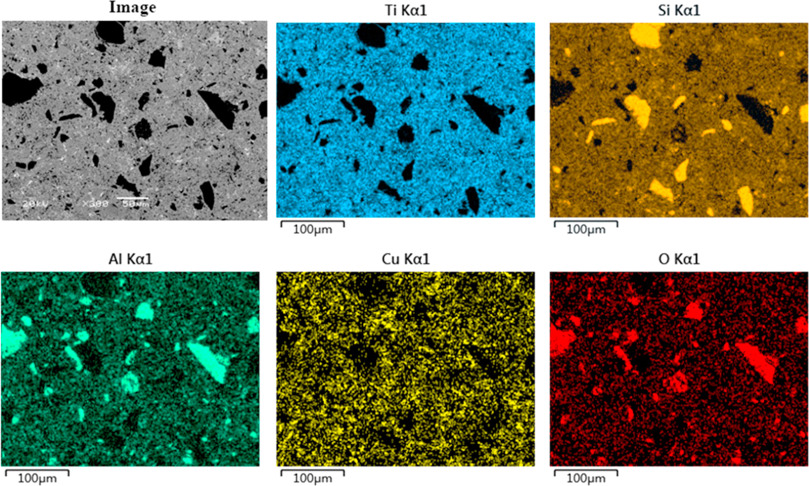Abstract: Dense Ti3SiC2/Cu/AI/SiC composites (TCASc) were successfully produced by powder metallurgy/spark plasma sintering (SPS). The composition and microstructure of the composites were analyzed by X-ray diffractometry and scanning electron microscopy equipped with energy dispersive spectroscopy. The tribological properties of the TCASc sliding against Si3N4 ball at temperatures ranging from room temperature (RT) to 800 degrees C were investigated in comparison with those of Ti3SiC2 (TSC). The tribology tests were conducted on dry sliding tribometer by ball-on-disk configuration. The wear mechanisms were discussed in detail. The results show that the main phases of the composite include TSC, A1Cu, SiC, and Al2O3. The incorporation of Al could inhibit the decomposition of TSC. The hardness and flexural strength of the composite are slightly lower than those of TSC. The tribological properties of TCASc and TSC are intensively dependent on temperature. The tribological properties of TCASc are better than those of TSC at room and medium temperatures (wear rate, WR, of TSC at RT and 200 degrees C: (8.63 +/- 0.37) x 10-4 and (2.15 +/- 0.18) x 10-3 of TCASc (5.31 +/- 0.55) x 10-4 and (1.12 +/- 0.02) x 10-3 mm3/N . m, respectively), while the wear properties of TCASc are not better than that of TSC at 400-800 degrees C (WR at 600 degrees C, for example, for TSC: (9.7 +/- 1.4) x 10-5 and TCASc (2.27 +/- 0.15) x 10-4 mm3/N . m, respectively). Abrasive wear dominates the wear mechanisms at RT and 200 degrees C for TCASc. The incorporated phases of AICu, SiC, and Al2O3 reinforce the bonding of TSC grains and nail the surrounding soft TSC matrix under the cyclic stress. At high temperature, dynamic-equilibrium tribo-oxides layers show the lubricating and wear reduction effects contributing to the decreasing friction and wear for both TSC and TCASc. The adhesive wear resulting from the plastic flow is one of the reasons of the higher WR of TCASc than that of TSC.

KeyWords Plus: ULTRA-LOW FRICTION; MAX PHASES; POLYCRYSTALLINE TI3SIC2; BEHAVIOR; AL; STABILITY; CARBIDE; AMBIENT; ALLOY; SPEED
Published in TRIBOLOGY INTERNATIONAL, 104 294-302; 10.1016/j.triboint.2016.09.008 DEC 2016


